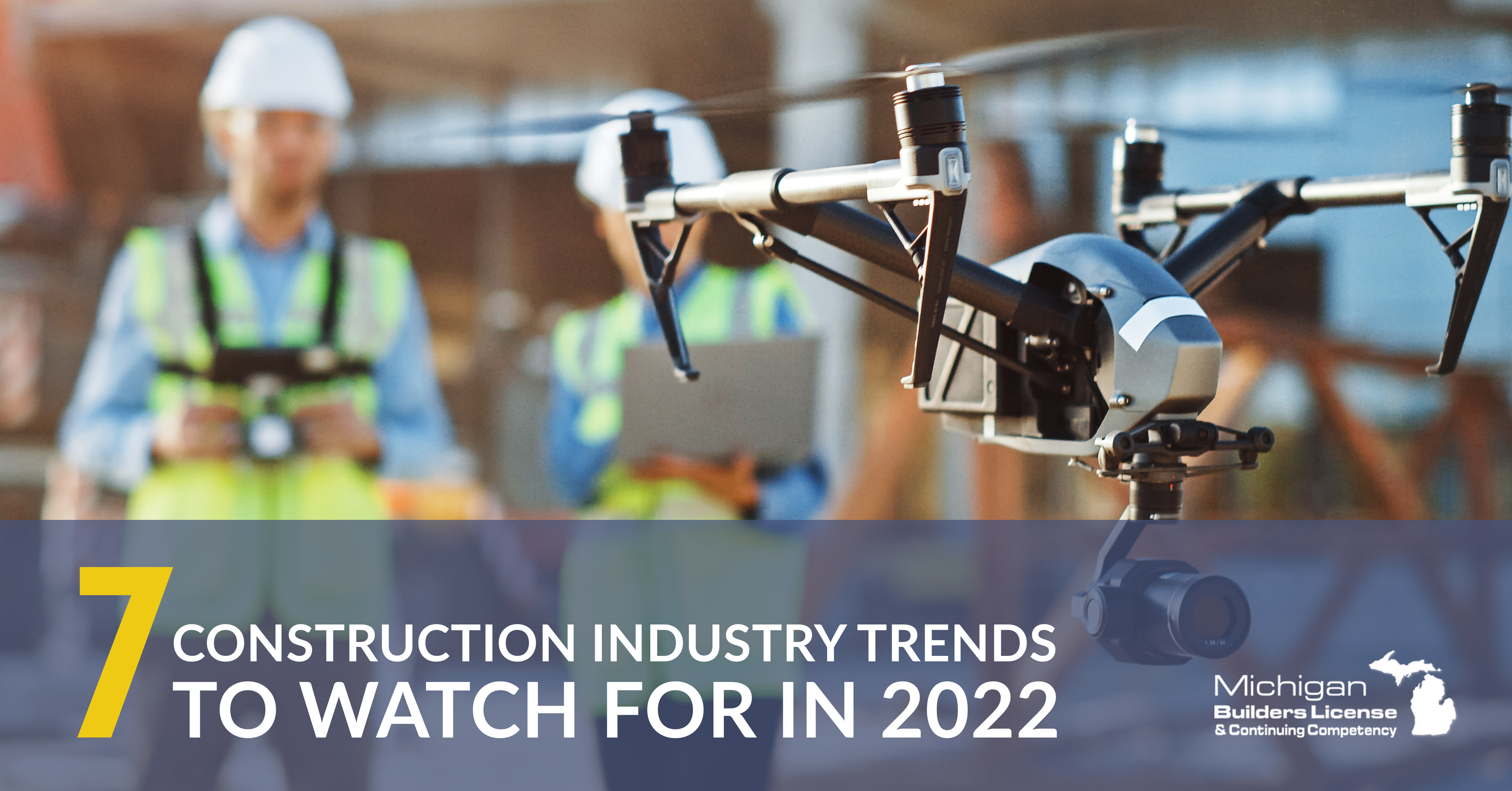As 2021 comes to its close, it’s time to start looking towards 2022. Construction industry professionals have seen significant changes to the industry over the last several years, and those changes will only continue. Reliance on new technologies, focus on green and sustainable practices, and pressure from clients to work faster and smarter will influence the way we work, staff, and allot resources.
Staying on top of trends is critically important so that your company can remain competitive on every level - price, quality, and time to completion. Using your resources wisely can save money, keep workers fresh, and increase the number of jobs you can successfully take on and complete each year.
Here are the top 7 trends you can expect to see more of 2022.
1. More Women in the Industry
Men have always dominated the construction industry, but over the last 10+ years, we have seen an increase in female-owned construction companies and women in senior leadership positions. As the need for highly educated employees and trade school graduates increases, women will continue to enter the construction industry at a higher rate than in previous generations.
2. Modular Construction
Modular construction and off-site creation of components have gained more popularity for a few reasons:
-Skilled laborers can focus on their areas of expertise.
-New technologies can be applied as efficiently as possible.
-Less waste of materials and hours as processes are streamlined.
-Huge cost savings.
-Huge time savings.
We can expect this trend to continue as the quality of modular construction continues to increase.
3. Increased Reliance on Robots
The use of robots has increased in most industries, and construction is no different. Robots are great for painting, loading, brick-laying, scaffolding construction, and installing drywall. The use of robots limits the use of skilled workers for dangerous or repetitive tasks. Robots are also useful during labor shortages.
4. Use of Drones
The use of drones to oversee construction sites, observe progress, and limit theft and vandalism has only increased in the last few years. Using drones can cut back on hours and minimize injuries by keeping workers off of the jobsite when it is unnecessary to be there.
5. Putting Safety First
Construction is well-known as one of the most dangerous industries; unlike other industries, it is easy for injuries to become fatal on a construction site. Covid-19 has increased the emphasis on safety and health, even at construction sites. Workers are demanding better working conditions, and employers are stepping up with enhanced safety protocols and improved healthcare plans in order to retain quality employees.
Some high-tech firms are even beginning to use PPE that includes wireless sensors to monitor an employee’s vital signs. This can alert managers if someone is exhausted or at risk for injury. We can expect to see even more focus on employee well-being in 2022, especially as the industry faces major labor shortages.
6. Preference for Used & Rented Equipment
Cost savings are driving many of the trends in construction as material costs go through the roof. To keep projects manageable, many companies are purchasing used equipment or renting equipment as needed rather than making large purchases. Renting equipment also allows companies to experience new technology before investing heavily in it.
7. Continued Focus on Sustainability
Clients are still expressing interest in sustainable materials and building practices, so companies continue to explore more efficient and forward-looking methods. Examples include self-healing concrete, flexible concrete, and transparent aluminum, as well as 3D printing and the option for green scaping on rooftops. Some of these trends are spilling over from commercial projects to residential projects.
As many construction companies face labor shortages, rising costs, and even more demanding clients, it’s imperative to stay on top of industry trends to remain competitive. You can expect these 7 trends to continue into 2022 and beyond.




